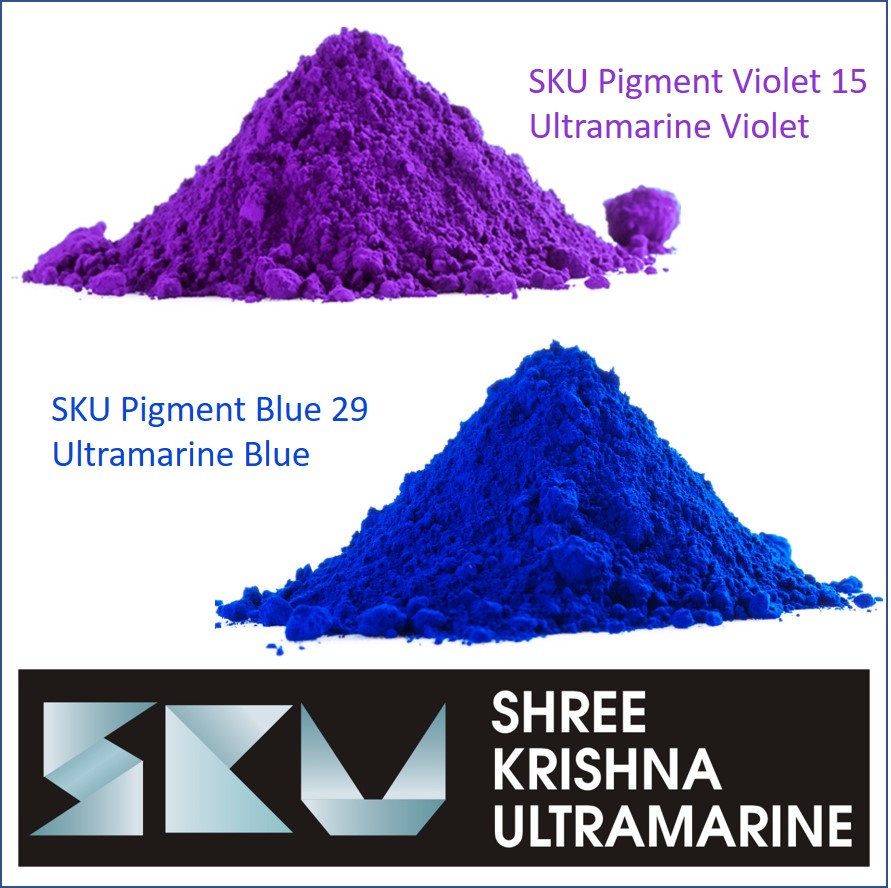Why Ultramarine Pigments Remain the World’s Most Trusted Blue

For centuries, color has shaped art, design, and industry. Among the most iconic hues, Ultramarine stands out for its depth and richness. Today, companies like SKU Pigments supply high-quality Ultramarine pigments, including Ultramarine Blue, Ultramarine Violet, Pigment Blue 29, and Pigment Violet. From paints and plastics, Ultramarine has become the standard of modern blue pigments.
The History and Significance of Ultramarine
The name Ultramarine comes from the Latin “ultra mare,” meaning “beyond the sea,” a reference to lapis lazuli originally imported from Afghanistan. For centuries, it was the most expensive pigment, used by Renaissance masters to illuminate manuscripts. It symbolized wealth and divinity.
Modern chemistry made it possible to produce artificially Ultramarine pigments, bringing the once-exclusive shade into everyday use. This breakthrough turned a exclusive pigment into a cost-effective solution for countless sectors.
Why Ultramarine Blue Leads the Industry
Ultramarine Blue pigments—the synthetic form of Pigment Blue 29—are the most widely used. Known for their stability, they are safe, eco-friendly, and non-toxic. They are used in:
• Decorative finishes for long-lasting shades.
• Plastics and rubber, thanks to UV resistance.
• Inks and printing, where precision is vital.
• Cosmetics, given their non-toxic nature.
This balance of performance and safety keeps Ultramarine Blue among the most demanded pigments.
Ultramarine Violet and Pigment Violet
Ultramarine Violet offers delicate hues that appeal in decorative paints. Pigment Violet derived from Ultramarine is eco-safe, making it ideal for sensitive products.
Its muted shade enhances luxury packaging, while ensuring longevity without chemical breakdown.
Industrial Uses of Ultramarine Blue
Pigment Blue—particularly Ultramarine Blue pigments—remains a trusted industrial choice. It offers weather resistance for:
• Vehicle coatings with lasting vibrancy.
• Packaging, ensuring stable shades.
• Decorative plasters, adding beauty and durability.
This cross-sector utility ensures Pigment Blue’s staying power.
The Benefits of Blue and Violet Pigments
• Non-Toxic & Safe: Ideal for cosmetics and toys.
• Heat & Light Resistant: Stable in outdoor use.
• Eco-Friendly: Reduced environmental impact.
• Cost-Effective: Budget-friendly industrial choice.
• Versatile: Across paints, plastics, printing, and construction.
Applications Across Sectors
1. Paints & Coatings: Decorative finishes.
2. Plastics & Rubber: Safe for packaging.
3. Cosmetics: Skincare-safe pigments.
4. Construction: Plaster and decorative finishes.
5. Printing & Inks: Vivid packaging inks.
The SKU Pigments Advantage
SKU Pigments stands among global suppliers, offering eco-conscious solutions in Ultramarine pigments. Their product portfolio includes:
• synthetic Ultramarine for mass production.
• Ultramarine Violet and Pigment Violet for refined finishes.
• Custom shades for tailored Blue Pigments applications.
Their reputation is built on global reach and green practices.
Final Thoughts on Ultramarine Pigments
From a costly luxury to a global industrial pigment, Ultramarine has stood the test of time. Whether it’s the timeless vibrancy of Ultramarine Blue, the sophistication of Ultramarine Violet, or the stability of Pigment Blue 29, Ultramarine pigments remain essential.
With SKU Pigments as a trusted partner, industries achieve innovation with color. As demand for sustainable pigments rises, Ultramarine will remain dominant in global markets.
FAQs
1. What is Ultramarine?
A vibrant pigment from lapis lazuli, now produced synthetically.
2. What is Pigment Blue 29?
The synthetic form of Ultramarine Blue.
3. Where is Ultramarine Violet used?
In eco-friendly and children’s products.
4. Are Ultramarine pigments safe?
Certified safe for cosmetics and toys.
5. Why choose SKU Pigments?
Trusted supplier worldwide.